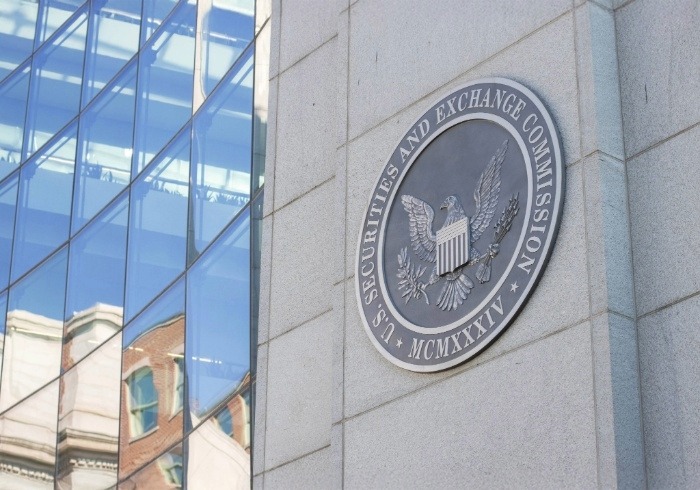Last year, the Bankers Association for Finance and Trade (Baft) revised and updated its English law master participation agreement (MPA) in order to drive further standardisation in trade transactions and meet the “modern-day requirements” of the industry. It included a series of significant changes, including allowing for ‘true sale’, namely the transfer of financial assets, rather than only transferring liability of one party to the other; removing optionality within the document; and taking out the previous separate provision dealing with fraud risk.
To get a feel for how well the new MPA has done in the year since its release, GTR speaks to Geoffrey Wynne, partner at Sullivan, which advised Baft on the update, and Paul Coles, head of global transactional distribution at HSBC and head of market practice at the International Trade and Forfaiting Association (ITFA), which was involved in the revision.
GTR: How has the new English law MPA been received by the market over the last 12 months?
Wynne: Those who have never had a master participation agreement with a particular counterparty have been very keen and very happy to use the new form, generally speaking. They find it easier because there is no optionality about it, therefore you can sign it up without too much of a problem, and if you’ve got adjustments to make on particular transactions, you can make those adjustments in the offer and acceptance. In many ways, we are quite pleased.
GTR: Was removing optionality the right choice, in hindsight?
Wynne: I still maintain the position that the optionality was what I would have called a ‘cop-out’ in the original, because in a few areas there was a problem and parties couldn’t reach agreement, so consequently they left optionality in two or three different places. So, we made a decision for the market and a lot of the market is very happy with that decision. To that extent, on balance it seems to have gone well and it seems to have been well received. I think we got it right, certainly from a risk transfer point of view and the accounting side on both the funded and the unfunded approach.
Coles: Less optionality makes it a lot easier and cleaner and there is less debate over which option it should be. It seems that the smaller banks are much more flexible or nimble and they are happy to just accept it as the industry document. The bigger banks are the ones that have more internal processes to go through in order to ratify adopting a new document and what that document should look like.
Wynne: There remain some banks who, notwithstanding what we think is a good document, have still sought to put their own mark on the document, and put some extra provisions in. In a number of cases, we have gone back to the relevant bank and said that we think it may be that they have misunderstood the document. But I am not seeing wholesale changes.
GTR: What issues have been raised by banks, and has there been any push-back around implementing the document?
Wynne: In terms of issues that have come up, the old chestnut of, ‘why is there no reference to fraud in the document?’ continues. It was the subject of much discussion soon after its launch. Many people have been convinced and therefore quite happy that fraud is dealt with and didn’t need a specific clause. If there is fraud, then you look at what the fraud was and you decide if there is an innocent fraud, namely something that the seller would never have been able to find. In those circumstances the risk is shared, which seems quite reasonable. On the other hand, if the seller in their checking of documents or in how they have dealt with the transaction should have spotted the fraud, there will be a right for the participant to claim their money back if there is a loss.
Coles: From an ITFA perspective, we explained that it was in a way a red herring to have previously had such a black and white fraud clause. There is a duty of care and attention by the seller and that hasn’t gone away. You still have the fact that any gross negligence or wilful misconduct creates a liability on the seller. But equally, everything else is a shared risk, so the risk of non-payment is shared between the two parties. You make a claim on the participant, you get the money from them, and then you go through the process of figuring out what went wrong. And if you get recoveries, you pass them on. If you don’t and it was due to a party not doing something they should have done, clearly that changes the balance a little bit and gets treated accordingly.
Wynne: In the funded area, we have reflected that if you fund a participation, you get an indivisible right in the underlying transaction. We thought that was good, and that met with the requirements of IFRS9 from the point of view of transferring the risk and transferring the rights to the other party. One bank that I’m in discussions with said that they prefer debtor/creditor, which is the old way. We can’t tell them not to have debtor/creditor. But what we are saying is that we don’t think it’s where the market is going. But that I would say that theirs is very much a minority position.
GTR: Has take-up been as smooth as expected?
Coles: I think some people were hoping that it would be embraced immediately. The reality is that nobody goes out and re-papers everything for the sake of it. It takes time and effort; if you’ve got an existing agreement, you’re likely to stick with it. So, adoption has been gradual rather than everyone suddenly switching.
Wynne: Not surprisingly, some large banks in particular who had a large number of participation agreements already signed under the 2008 MPA have in some ways been slow in wanting to make the switch. This is what one would always expect. When something new comes out, but there’s no actual need to replace it, you are probably not going to do it until you get another opportunity to think about it. Therefore, in the widest sense, the take-up as a percentage is slower than you might expect. But it was not unanticipated that it would be slower.
GTR: From a bank perspective, how easy has the new MPA been to implement?
Coles: From an HSBC perspective, we have been very keen to embrace the market document as it is. We don’t want to tamper with the master and if adjustments need to be made deal-by-deal or counterparty-by-counterparty, let’s focus on capturing those in the transactional piece, which is the offer of acceptance rather than the master.
Getting the document vetted internally through all the different jurisdictions takes a bit of time. That’s where we have seen it’s not an overnight process just to pick up a document and roll it out internally. But having said that, we’ve very much stuck to our approach that we don’t want to mess with it.
We have now executed a few of them with no changes, and we’ve made it very clear to the counterparties we’ve negotiated with that we want to adopt that frame of mind. So far, where we have had to put a new agreement in place, it’s been good and we’ve had a good experience.
GTR: Where does the new MPA perform less well?
Coles: A single document to cover all our activities across so many different markets is always going to have compromises built into it, and it is never going to be perfect. Everybody is always going to have issues with this, that or the other, but it is indicative that everyone realises how much better things work when you’ve got some consistency and standardisation.
You still have to look at it in the context of each and every transaction you do and where the counterparties are. It isn’t one-size-fits-all, but it ticks a lot of the boxes, a lot of the time. The MPA is more of a transactional document rather than a programmatic document, so it still requires some tinkering to make it work well if you have a revolving type of distribution. But again, that doesn’t mean to say you can’t use it. It just requires a little bit of finessing to get you to where you need to be.
GTR: How positive are you about the new MPA’s impact on the market?
Wynne: As an overall market issue, there is an awful lot of risk transfer and funding transfer going on. This document is quite useful in doing it, and we have done some derivations of it, because participation is seen by many as a good way of bringing others into transactions. That is quite important, and indeed we are looking at a transaction at the moment where participation is being used to bring in non-banks.
Coles: There is a big drive in the industry as a whole to focus on making trade finance more standardised and more cost-effective, and to increase efficiencies across the whole ecosystem. This is obvious in the secondary market space, and I think the final document that came out was a really good step change and evolution of the old document.







